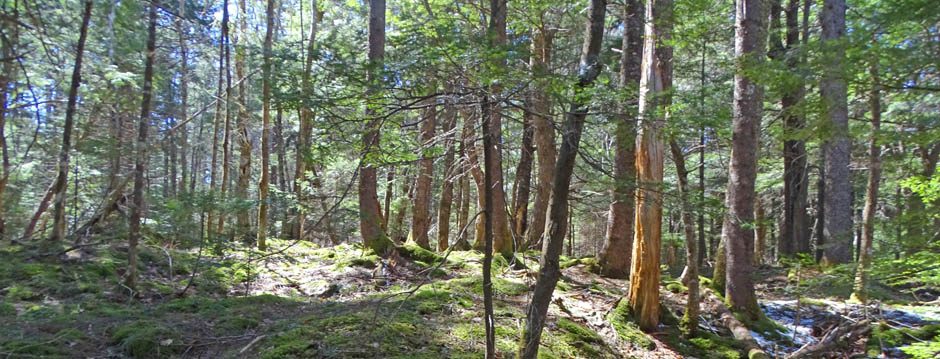A selection of papers from the scientific literature that are especially pertinent to the implementation of the Forest Triad in Nova Scotia
Patterns and potential drivers of exotic plant diversity in managed northern temperate and boreal forests
F.Wayne Bell et al., 2022 in Forest Ecology and Management. Based on observations in Ontario “…we used the NEBIE (natural disturbances and extensive, basic, intensive, and elite silviculture intensities) plot network, consisting of field sites across different forest types that originated from a range of silviculture systems to assess the role of silviculture intensity on exotic plant diversity. Botanical surveys were conducted pre- and two-, five-, and ten years post-forest harvesting” Of note: “Use of intensive practices (i.e., mechanical site preparation and herbicides) in both the TRIAD and NEBIE approaches may increase fibre production (Deighton et al., 2021, Searle et al., 2021), but may also increase the invasibility [i.e., the overall susceptibility of sites to invasion; (Williamson, 1996)] of forests by exotic plant species, which may compromise goals to conserve biodiversity (Simberloff, 2001)”; also “Susceptibility to exotic plants varied by forest type, with northern temperate and boreal mixedwood forests seeming more at risk than boreal conifer and northern temperate hardwood forests.”
Management diversity begets biodiversity in production forest landscapes
Rémi Duflot et al., 2022 in Biological Conservation “Based on concepts from landscape ecology, we formulate five hypotheses on how management diversity, i.e. combining various management approaches can benefit overall biodiversity across a production forest landscape.”
Closer-to-Nature Forest Management
Jørgen Bo Larsen et al., 2022. From Science to Policy 12. European Forest Institute. https://doi.org/10.36333/fs12
Some European perspectives. Triad Forestry is seen as an intermediate step in the progression towards Closer to Nature Forests.
Irregular forest structures originating after fire: An opportunity to promote alternatives to even-aged management in boreal forests
Maxence Martin et al., 2022, J Appl Ecol. (Open Access paper) “Many boreal forests of eastern Canada progress towards an irregular structure in the decades following the last stand-replacing fire. A substantial part of these early-successional forests may be suitable for alternatives to even-aged silviculture that better maintains habitats and functions of preindustrial boreal forests.”
Perspectives: Thirty years of triad forestry, a critical clarification of theory and recommendations for implementation and testing
Austin Himes Matthew Betts, Christian Messier & Robert Seymour. 2022. Forest Ecology and Management V 510, 15 April 2022. The full text is freely available.
Producing wood at least cost to biodiversity: integrating Triad and sharing–sparing approaches to inform forest landscape management
Matthew G. Betts et al., 2021 Biological Reviews V 96, Issue 4 Pages 1301-1317. (Only the Abstract is freely available)
Triad forest management: Scenario analysis of forest zoning effects on timber and non-timber values in New Brunswick, Canada
by Michael K. Montigny and David A. MacLean 2006. The Forestry Chronicle, Jul/Aug 2006, V 82, No 4. “Triad forest management is a form of zoning under which land is allocated into extensively managed, intensively managed, and reserve zones, with management tailored in each zone such that all objectives are met collectively across the landbase. We evaluated the utility of triad management on the privately-owned, industrial, 190 000-ha Black Brook District in New Brunswick, Canada. Scenario planning was used to simulate effects of 64 allocation scenarios”. Link is to the full paper.
Principles of ecological forestry. By R.S. Seymour & M.L. Hunter, 1999. Pages 22-61 in Maintaining biodiversity in forest ecosystems, Hunter, M.L. Jr. (ed.). Cambridge University Press, Cambridge, UK. 698 p. PDF of the full paper available here.
